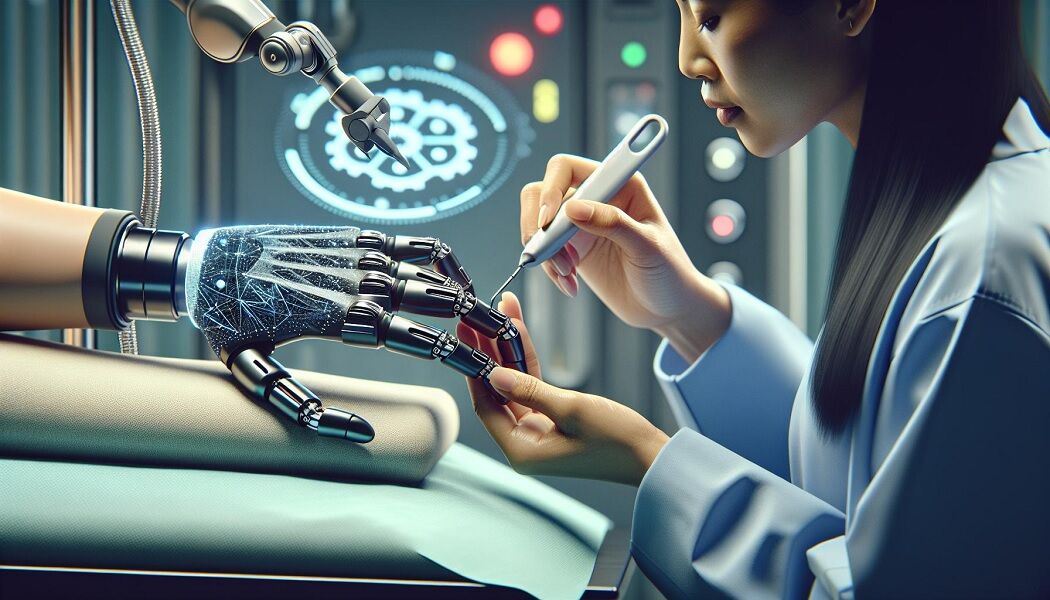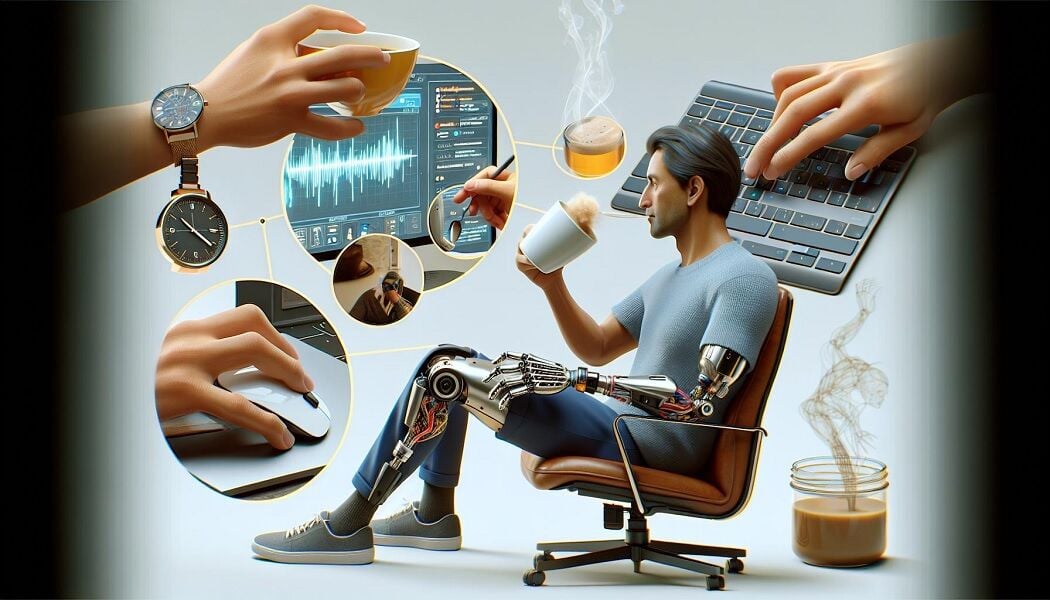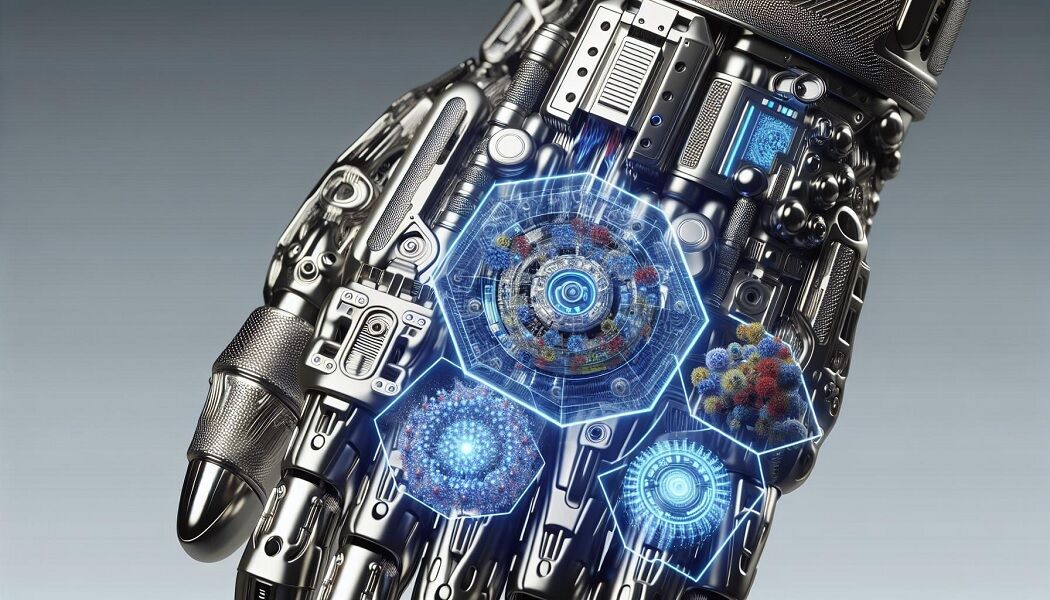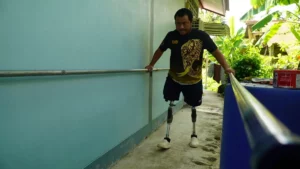AI prosthetics enhance life with personalized, adaptive technology

Envision a future in which prosthetic devices surpass the basic function of replacing lost limbs; they progress by assimilating knowledge from the user, adjusting to their walking patterns, cognitive functions, and emotional conditions. This concept is not just an element of speculative fiction; it accurately represents the current advancements in artificial intelligence (AI) technologies within the field of prosthetics. Owing to significant developments in biomechatronics, AI-enhanced optimization and learning algorithms are transforming the operational capacities of prosthetic devices, rendering them more intuitive and tailored to the individual requirements of users.
The application of AI within prosthetics is aimed at forging an uninterrupted connection between the device and its user, facilitating effortless communication. Employing technologies such as natural language processing, speech recognition, and computer vision enables these devices to comprehend voice commands and gestures and even express emotions. This augmented level of interaction heralds new avenues for users, permitting them to operate their devices in a manner that is both natural and intuitive.
Furthermore, the assimilation of AI into this domain extends beyond enhancing individual devices; it encompasses the creation of an interconnected ecosystem wherein devices can communicate among themselves as well as with the user. This capability significantly improves performance metrics and elevates the overall experience for individuals dependent on these technologies. Such advancements bestow upon users a degree of autonomy and functionality previously deemed unattainable, marking a paradigm shift in how prosthetic solutions are perceived and utilized.
Evolution of AI in prosthetics
Early developments in AI prosthetics
The journey of integrating AI in prosthetics began with attempts to mimic human sensory and motor functions. Early models focused on basic command recognition. It was revolutionary. Users could execute simple actions through muscle signals. Yet, these devices lacked intuition. They were clumsy. Feedback was minimal. Imagine having a hand but no sense of touch. That was the reality. Researchers knew the potential of AI but faced technological and computational barriers. Breakthroughs were gradual. Each step forward was a blend of curiosity and intricate engineering. The goal was clear – create prosthetics that could ‘think’ and ‘feel’.
The current state of AI technology in prosthetics
Fast forward to today, and the landscape has transformed. AI in prosthetics isn’t just a concept; it’s a reality. The technology has leapt from basic commands to intricate communication between the device and the user. Stretchable tactile sensors with liquid metal on prosthetic fingertips are a game-changer. They respond to pressure, emulating human touch. This allows for a more natural interface between the prosthetic and its user. The integration of AI goes beyond sensory feedback. Prosthetics now learn from the user’s behaviour. They adapt. The inclusion of technologies like natural language processing and computer vision has enhanced control. Real-time adjustments ensure safety and comfort.
AI has made prosthetics smart. They’re no longer just tools; they’re extensions of the body. A prosthetic leg under development illustrates this beautifully. It uses computer vision to adjust to different surfaces. Just like a self-driving car navigates roads, this leg navigates the physical world. It’s a stark contrast to the past. Users enjoy a level of autonomy unheard of before. Yet, the journey doesn’t end here. AI technology in prosthetics is ever-evolving. The future promises even greater synchronicity between the human mind and artificial limbs. Your interactions with the world could be as natural as they were before. The evolution of AI in prosthetics is not just about regaining lost function. It’s about redefining human potential.
Benefits of AI integration in prosthetics

The incorporation of Artificial Intelligence (AI) into prosthetics has markedly enhanced the quality of life for users. This technology enables surpassing fundamental functionality, improving mobility, and offering tailored solutions that cater to specific requirements.
Improved movement and functionality
The incorporation of Artificial Intelligence (AI) into prosthetic devices has significantly enhanced user mobility and functionality. These AI-integrated devices demonstrate exceptional proficiency in learning and adapting to the user’s unique behavioural and movement patterns, thus enabling more natural and lifelike motions. Prosthetic limbs equipped with AI technology can predict and execute a broad array of actions with notable precision, ranging from grasping objects to navigating complex terrains. This degree of autonomy in prosthetic limbs marks a substantial evolution in daily activities for users, converting tasks that were previously arduous into manageable and efficient operations.
Furthermore, the advent of tactile sensors that mimic human touch represents a pivotal advancement in how individuals engage with their surroundings. Fueled by AI, these technological breakthroughs allow users to discern pressure and texture, introducing an unparalleled layer of sensation that was once beyond reach. The significance of this innovation is profound; it markedly diminishes the risk of inadvertently dropping or damaging objects while concurrently boosting the user’s confidence in utilizing their prosthetic device.
Customised solutions for individual needs
Artificial Intelligence (AI) in prosthetics represents a significant advancement, providing bespoke solutions that cater to the individual requirements of each user. Leveraging sophisticated algorithms, AI is capable of analyzing extensive datasets related to the user’s physiological state, preferences, and lifestyle choices. This meticulous approach guarantees that every prosthetic device is not merely a generic solution but a custom-fitted extension of the individual.
The scope of customization transcends mere physical characteristics. Prosthetics equipped with AI capabilities evolve based on the user’s experiences, progressively refining their functionalities for increasingly tailored responses over time. Such adaptability encompasses adjustments in grip strength for holding various objects or altering walking patterns across different terrains, thereby ensuring the device adapts to the user’s lifestyle rather than imposing limitations.
This degree of personalization and adaptability is crucial as it ensures that the prosthetic remains applicable and supportive as the user’s abilities, necessities, and surroundings change. Consequently, these intelligent devices transcend their role as mere tools for mobility or activity; they emerge as dynamic companions that substantially elevate the user’s autonomy and quality of life.
Challenges and limitations

Integrating AI in prosthetics offers groundbreaking possibilities. However, it’s intertwined with challenges and limitations that need addressing.
Cost implications
AI-enabled prosthetics come with a steep price tag. Research and development in this field require substantial investment. The inclusion of sophisticated sensors, complex algorithms, and the need for constant updates escalates costs. Not just the initial purchase, but maintenance and software upgrades add to the financial burden. This makes it a less viable option for a significant portion of those in need.
Ethical considerations
The integration of AI in prosthetics raises numerous ethical questions. One pressing concern is data privacy. Sensitive information is collected and processed by these AI systems. Ensuring this data remains confidential and secure is paramount. Additionally, there’s the issue of dependency. Relying too heavily on AI could potentially diminish the users’ ability to perform tasks independently. Balancing between enhancing capabilities and fostering independence is crucial.
Accessibility for all patients
Accessibility remains a significant barrier. The advancements in AI-enabled prosthetics haven’t equally benefitted everyone. High costs and the requirement for specialised care limit access to wealthier individuals in developed countries. Those in developing regions, where such technology could drastically improve lives, are often left out. Bridging this divide is essential to ensure AI in prosthetics reaches its full potential.
Future trends in AI prosthetics
As we look ahead, the future of AI in prosthetics is ripe with potential. Efforts to make these advanced devices more affordable and accessible are key to unlocking their life-changing benefits for a broader audience. Innovations in technology and funding models could see costs decrease, making it easier for individuals across the globe to access AI-enabled prosthetics. Moreover, ongoing research and ethical discussions will likely lead to improved data privacy measures and reduced dependency concerns. The journey ahead is promising, and with continued dedication, AI prosthetics will undoubtedly become an integral part of enhancing the quality of life for many.
The surprising power of yoga for elders cannot be overstated. As a holistic practice, yoga offers a pathway to improved physical health, mental clarity, and emotional well-being, tailor-made for the unique needs of the old age population. Embracing yoga can lead to enhanced mobility, reduced stress, and a deeper sense of connection to one’s body and environment, unlocking a wealth of benefits that significantly elevate the quality of life in one’s golden years.



































